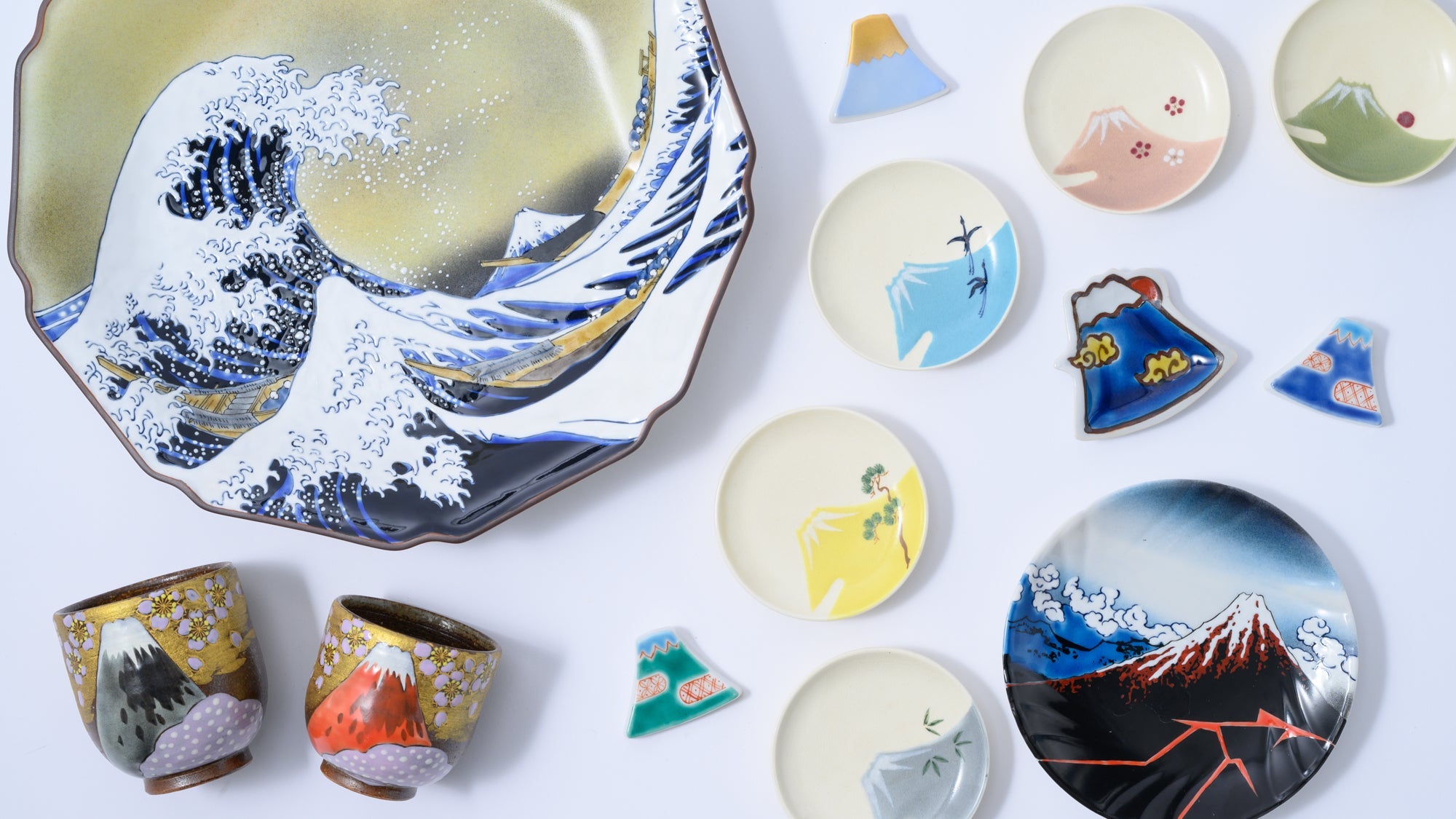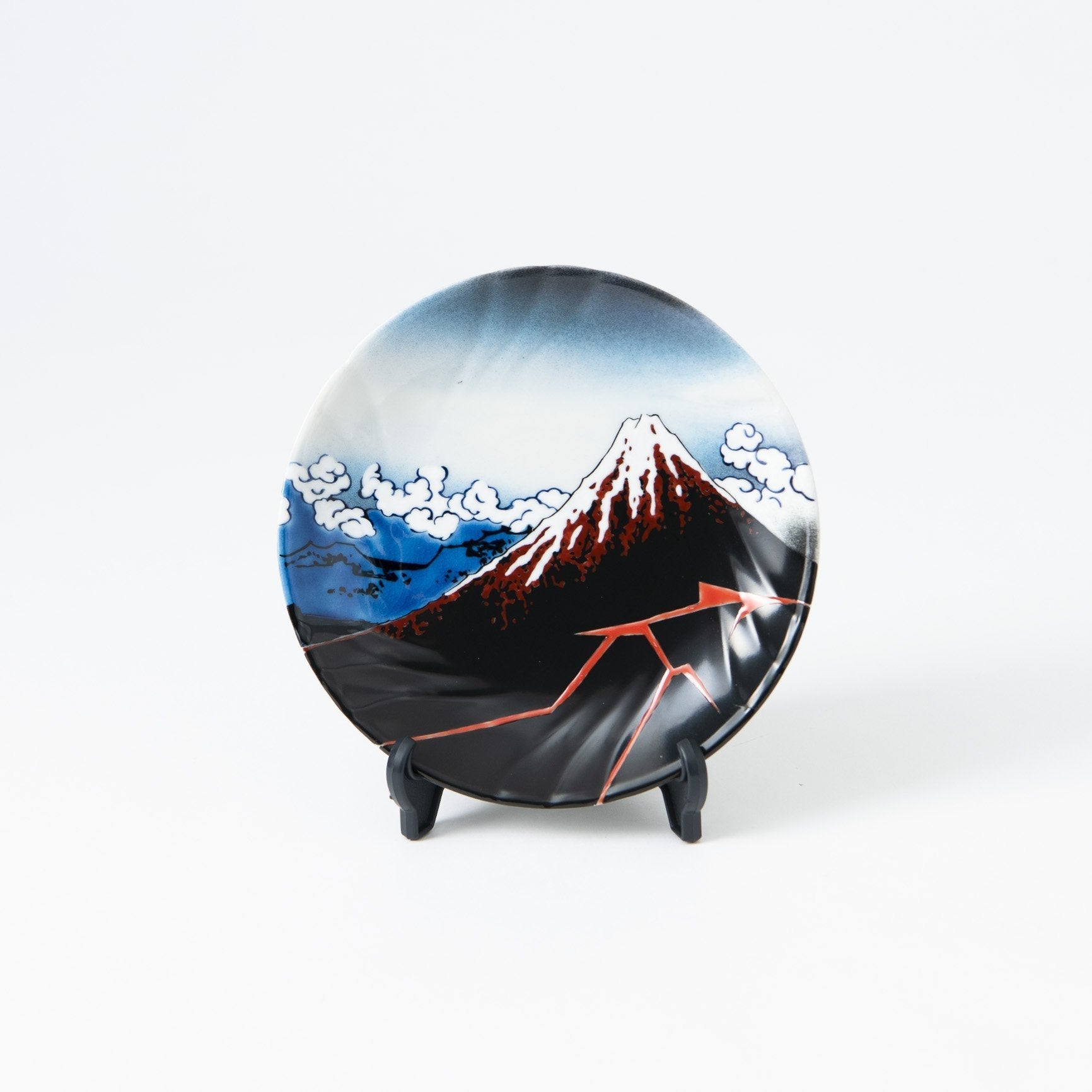
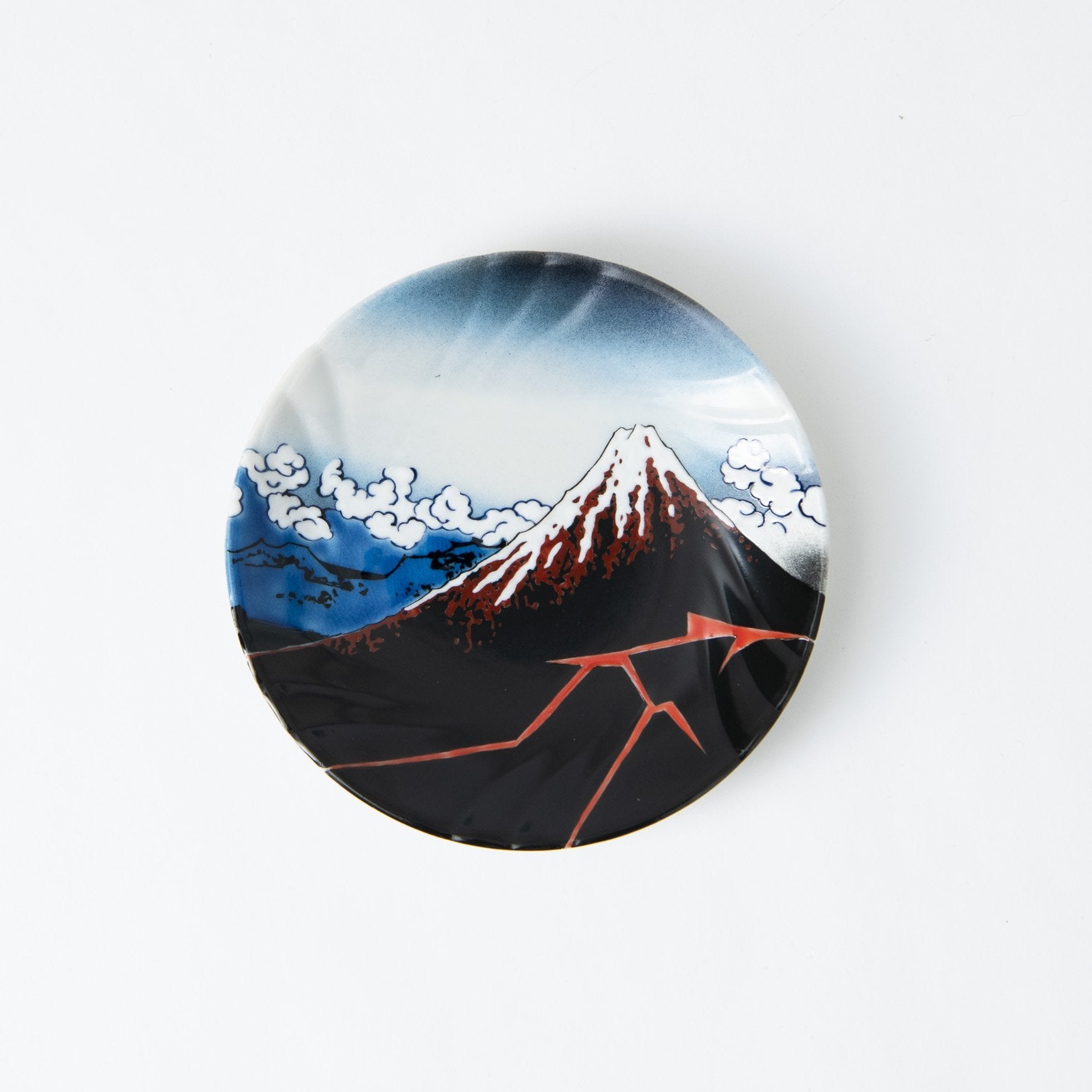
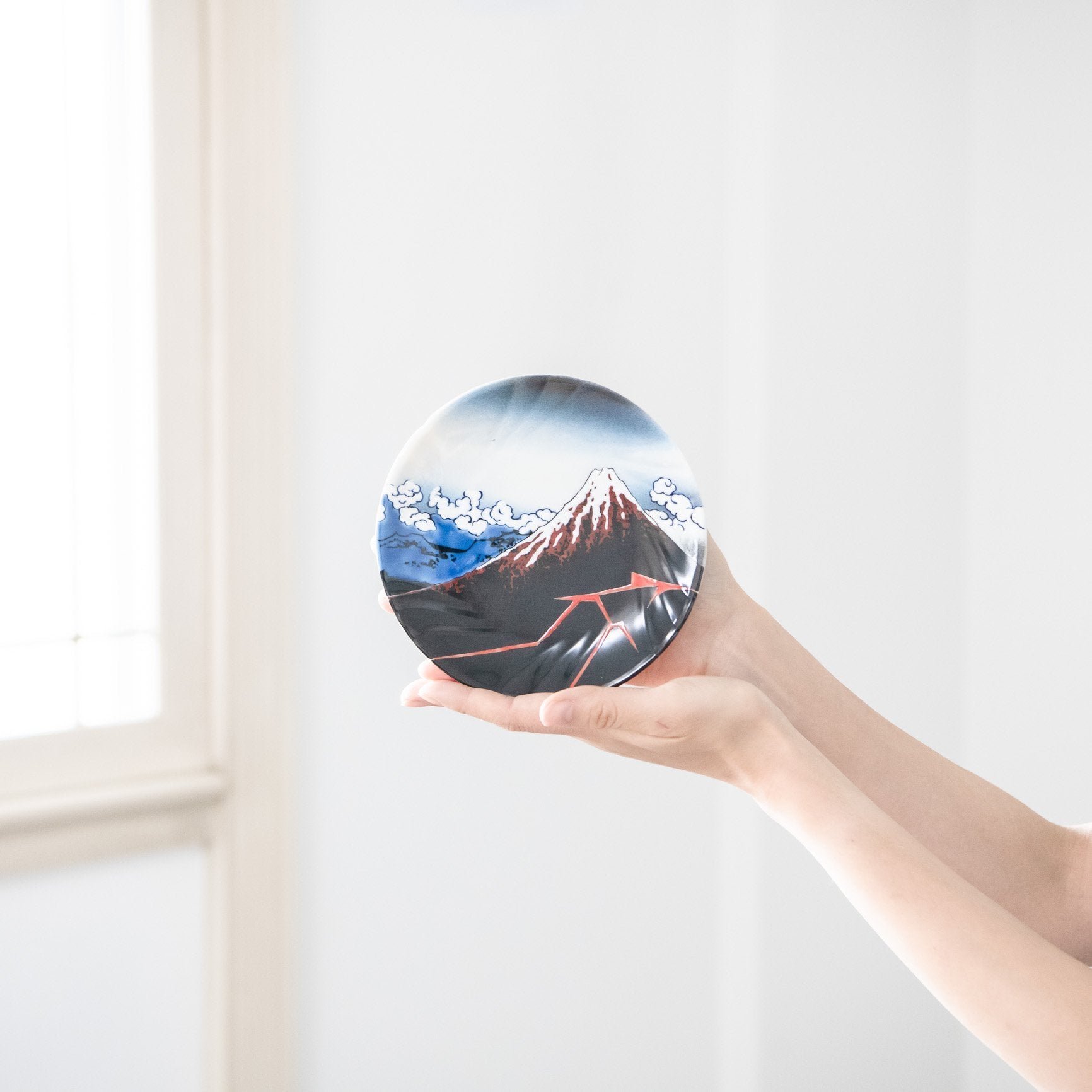
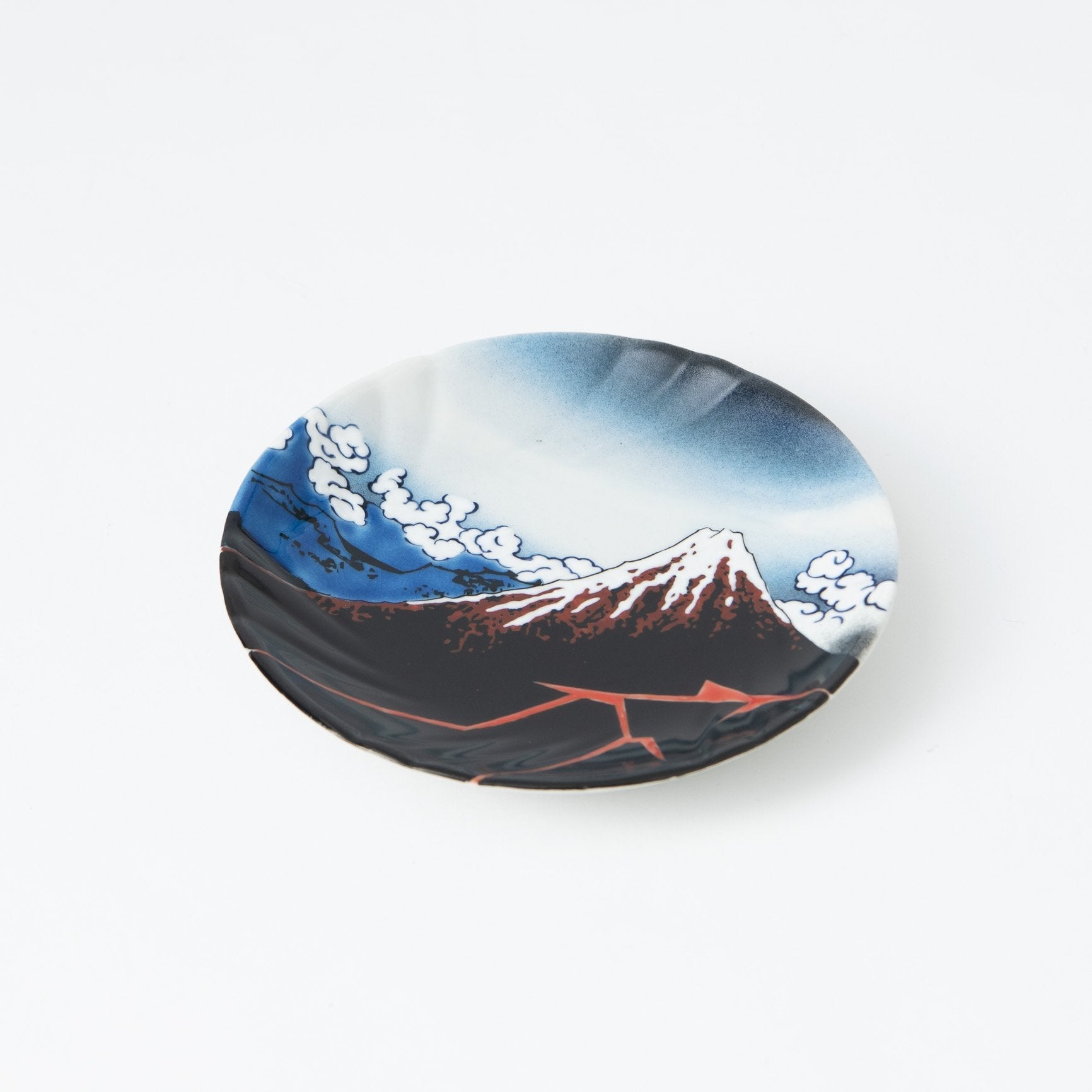
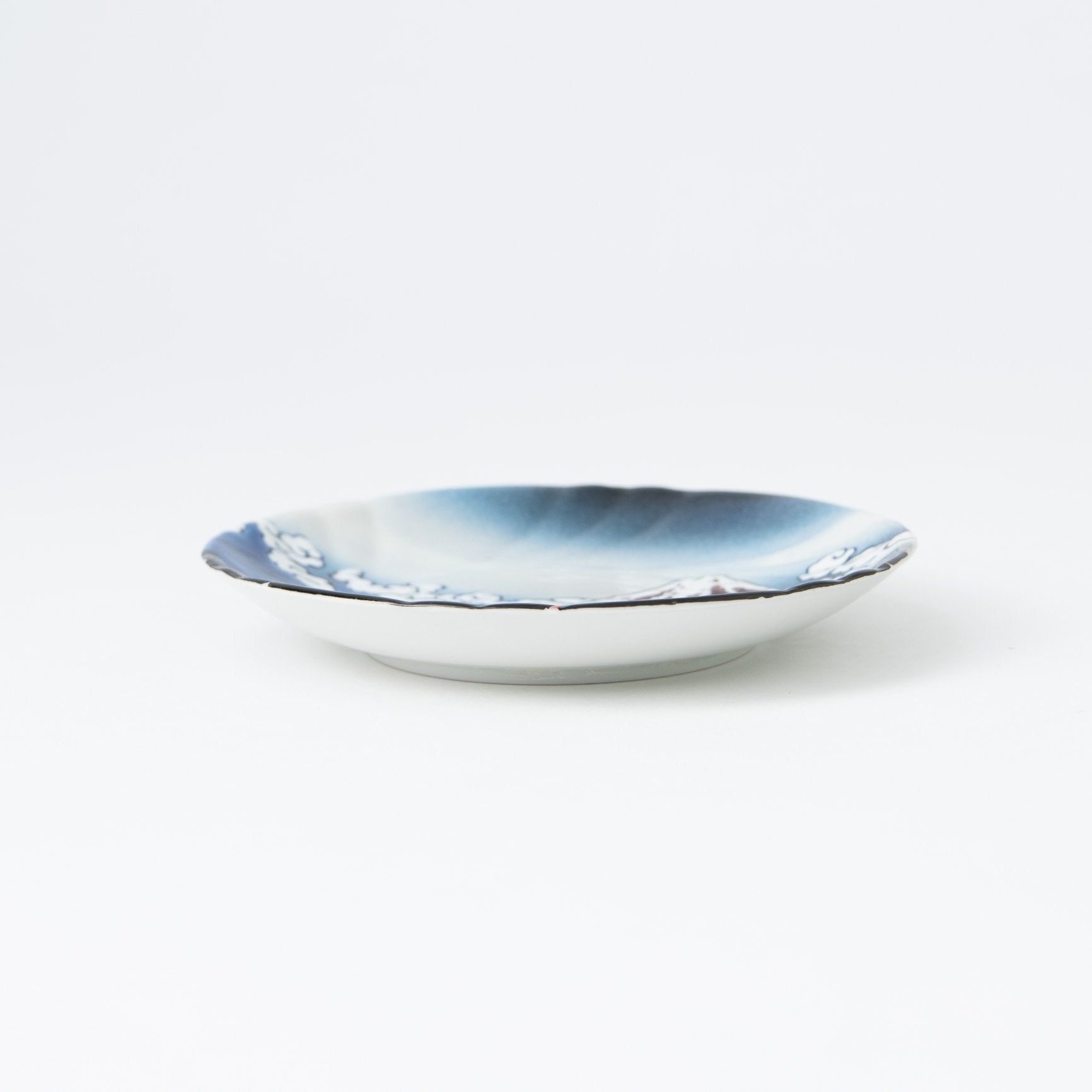
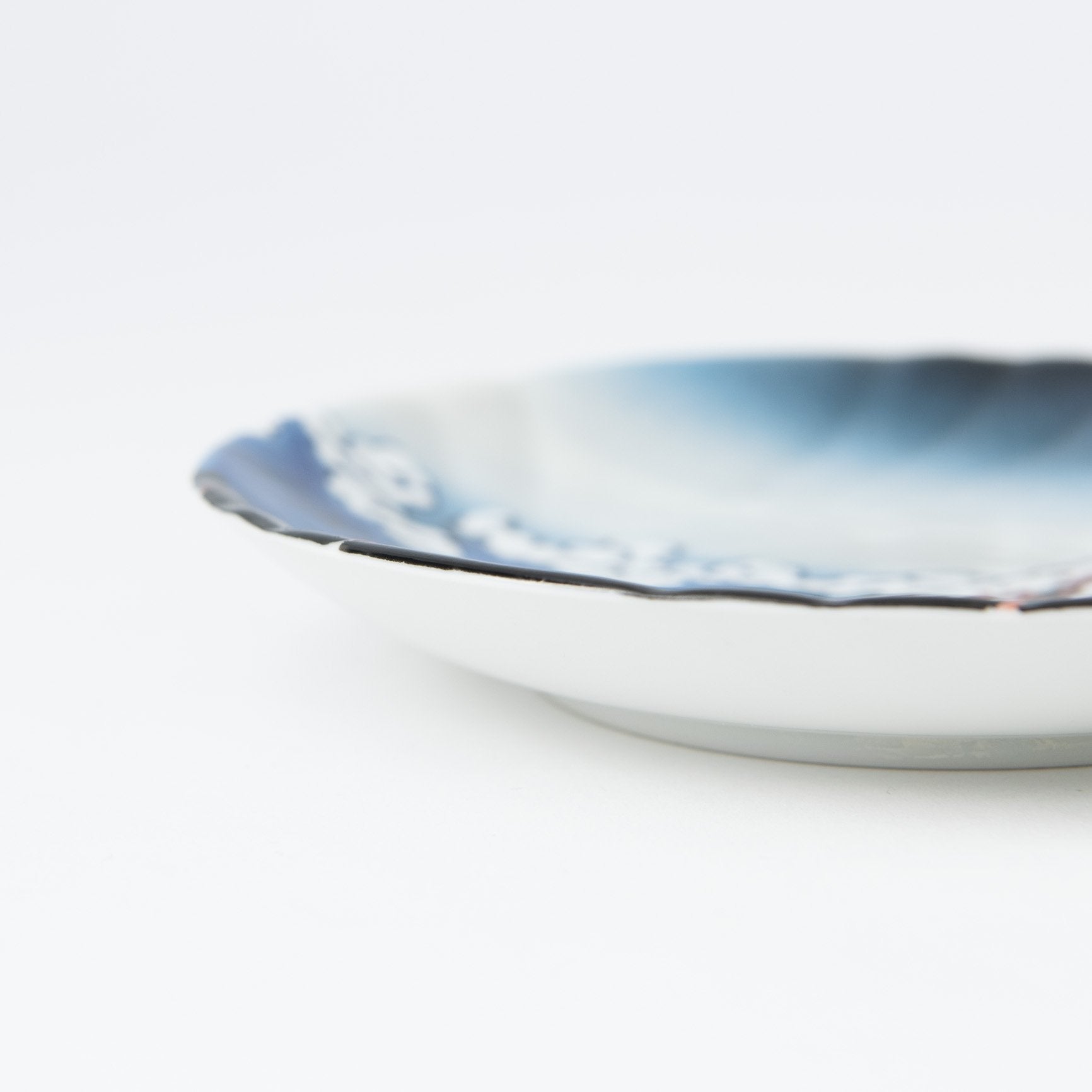
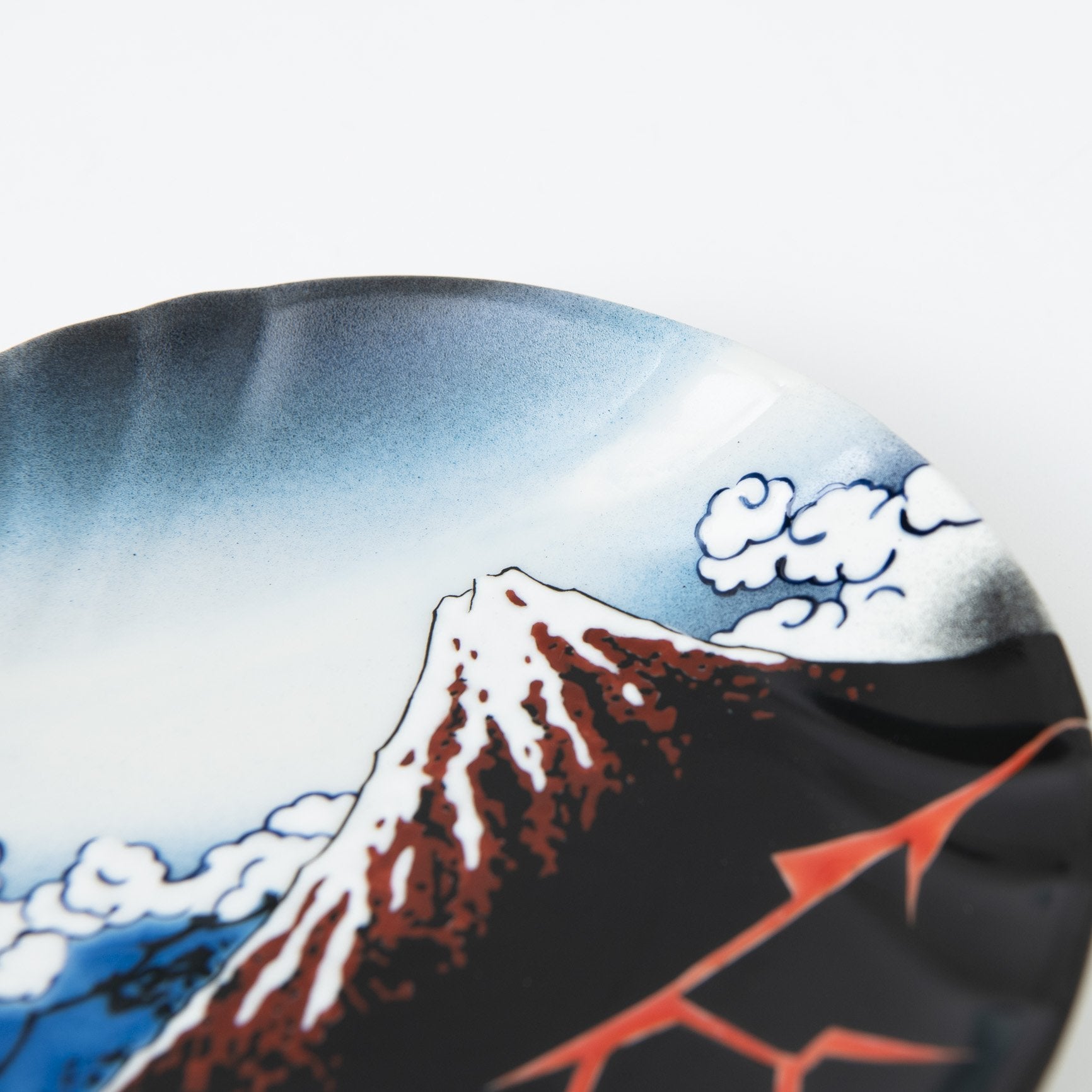
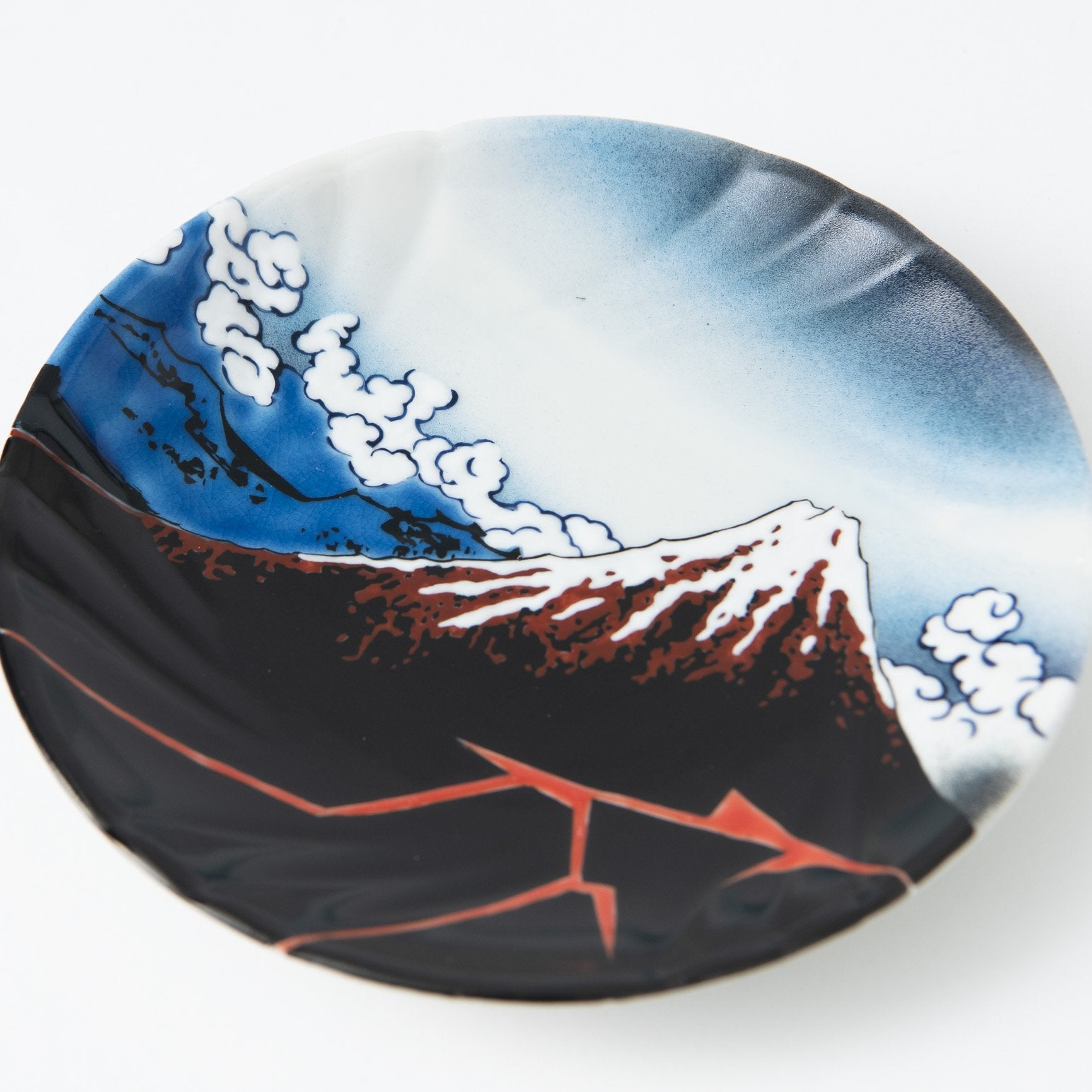
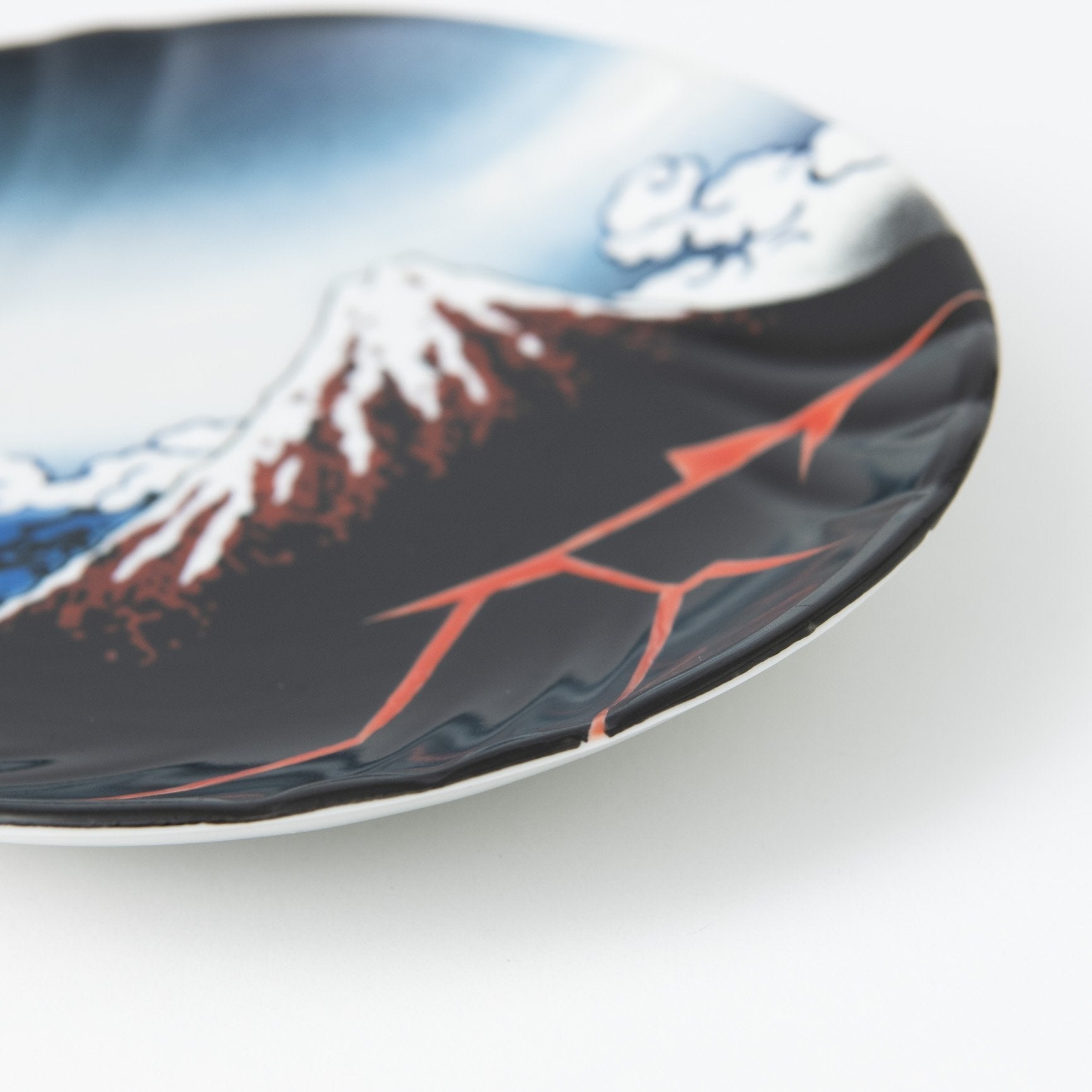
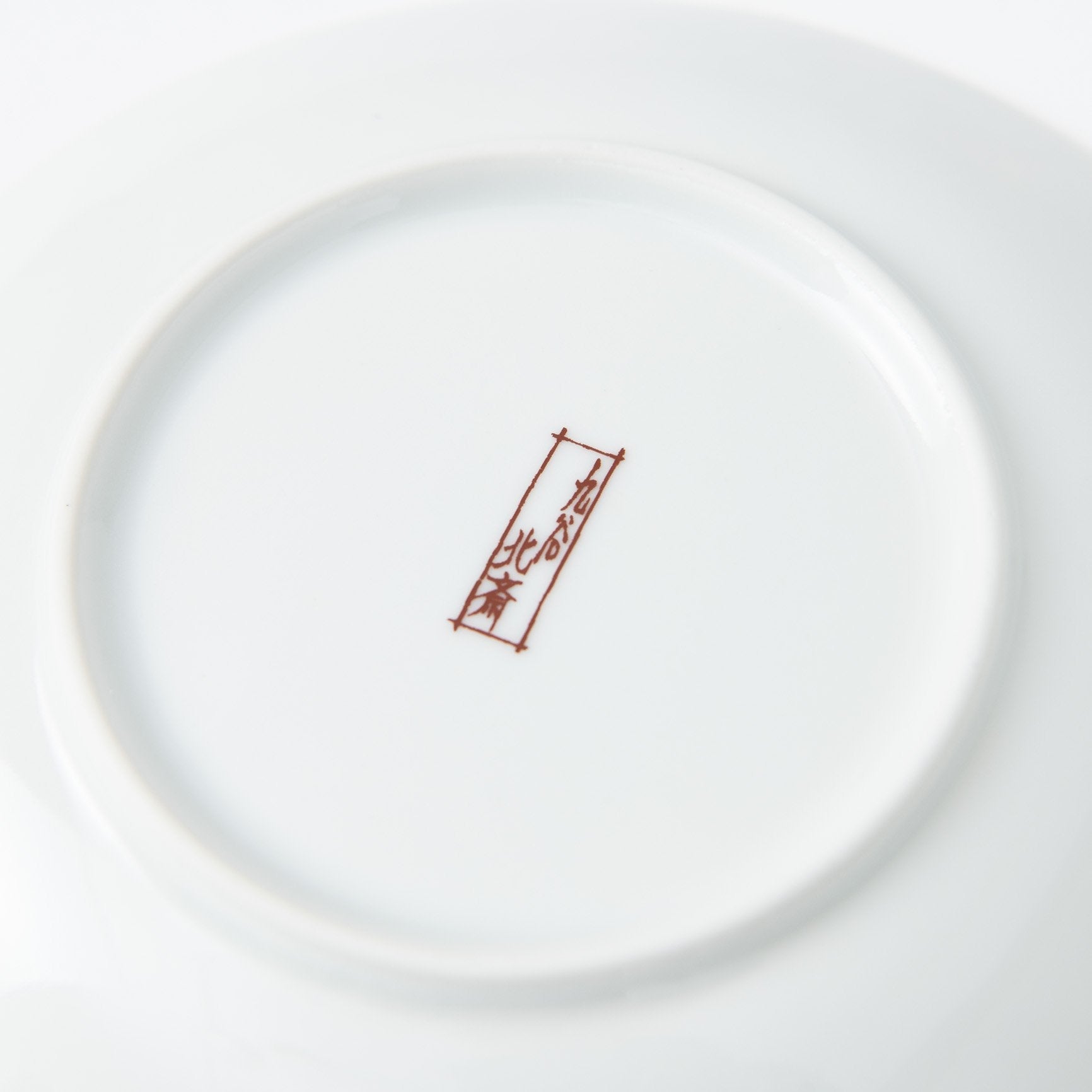
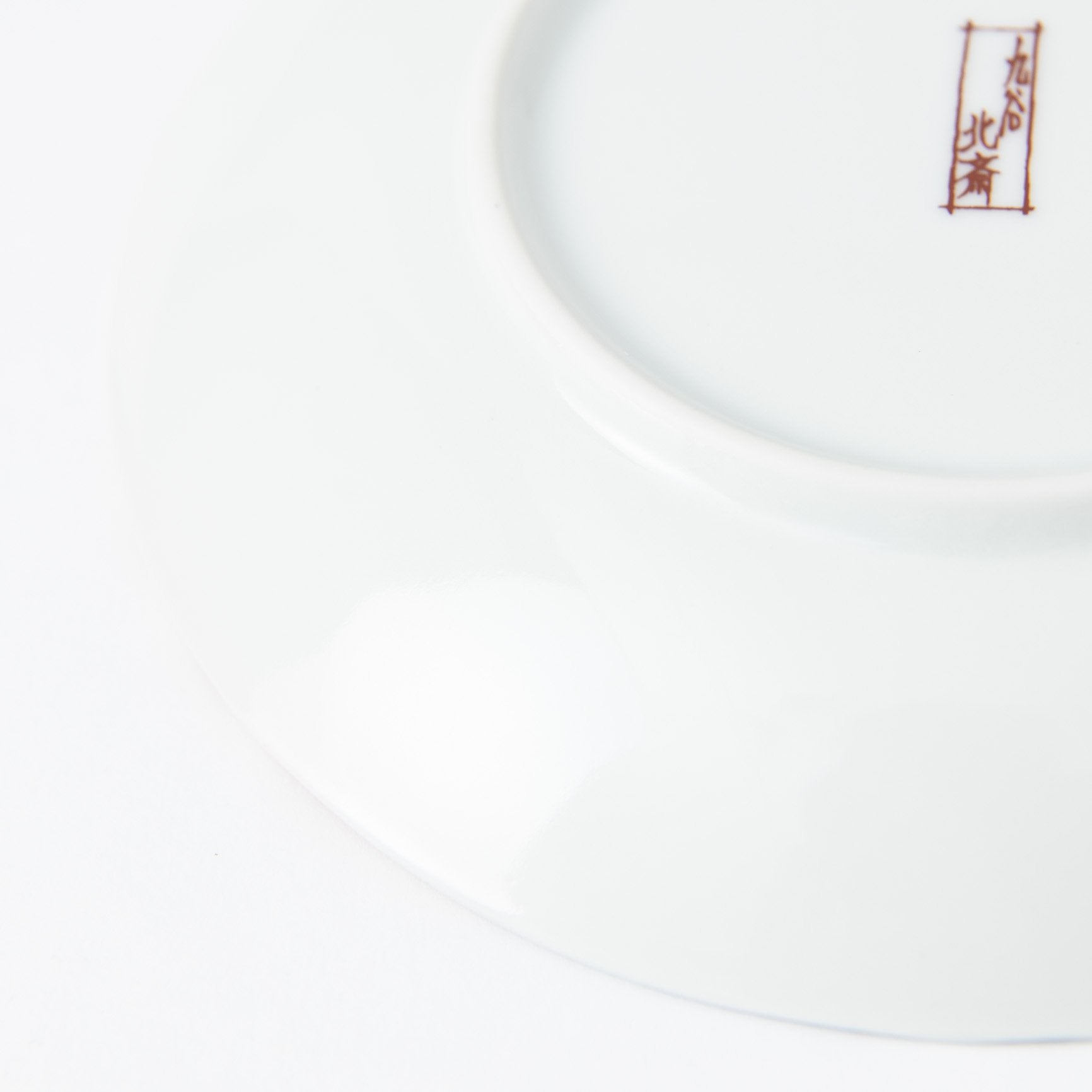
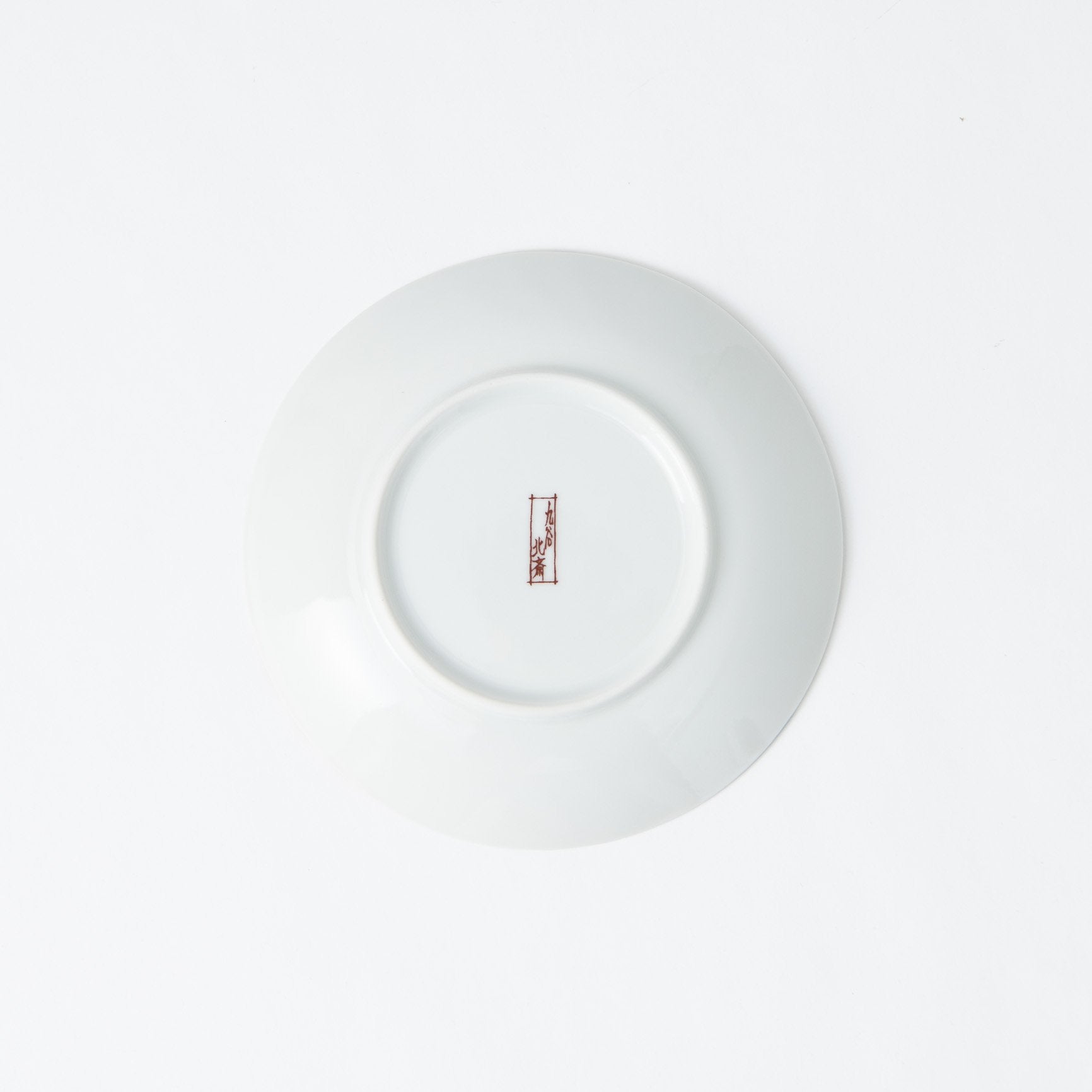
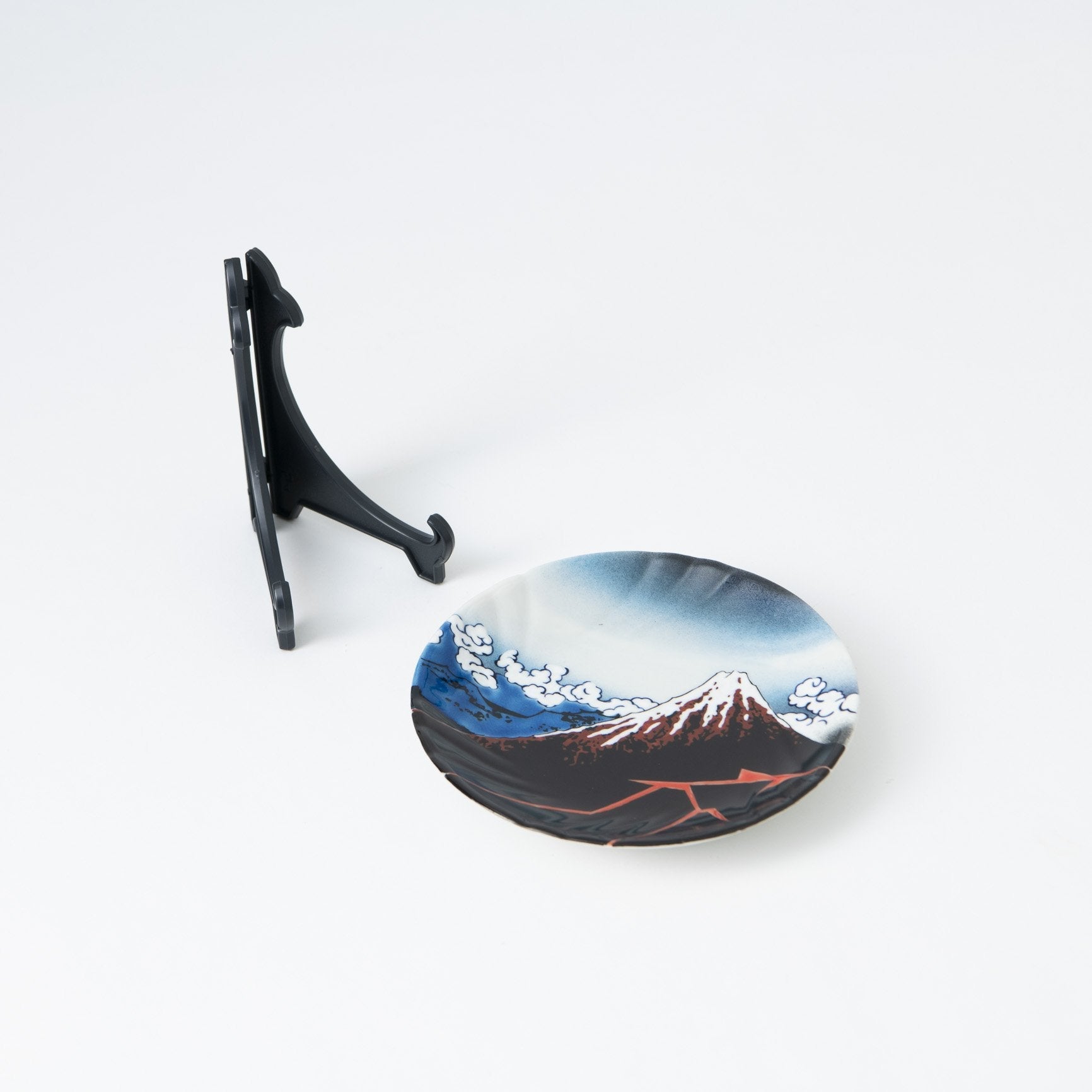
Hokusai Kuro Fuji Decorative Plate
Estimated Shipping Widget will be displayed here!
This plate features “Kuro(Black)Fuji", said to be a twin of "Aka(Red)Fuji" by Katsushika Hokusai.
Different from the majestic and generous Fuji in "Aka Fuji," "Kuro Fuji" depicts a wild and stormy Mt Fuji with the summer cumulonimbus clouds and lightning, giving the impression of nature's strength and dynamism.
Hokusai draws many pictures with Mt. Fuji as a motif. Mt. Fuji, a mountain loved by Japanese people, changes its appearance surprisingly depending on the season and weather, but Hokusai's deep observation and skillful expressiveness give each painting a depth and wonderful impression.
The size is great for serving side dishes, breads, desserts and fruits. It also makes a perfect home decoration when used with a stand.
It is a perfect gift for people who love Japanese art and culture.
DETAILS
| Quantity | 1 |
| Size | D 15 cm (5.9 in) |
| Material | Porcelain |
| Microwave | Yes |
| Dishwasher | Yes |
Maker / Brand
At Bizan Kiln, every piece is hand-painted by highly skilled artisans. The viscosity of the pigments, the choice of brushes, and the painting techniques are carefully adjusted for each design, ensuring that no two pieces are ever the same.
Layers of pigment are applied to achieve rich, three-dimensional surfaces, imbuing each piece with the warmth and vitality that only true handcraft can convey. The graceful balance of delicacy and boldness, expressed through vivid hues and confident brushwork, embodies the refined beauty that defines Kutani ware and lies at the heart of Bizan Kiln’s artistry.
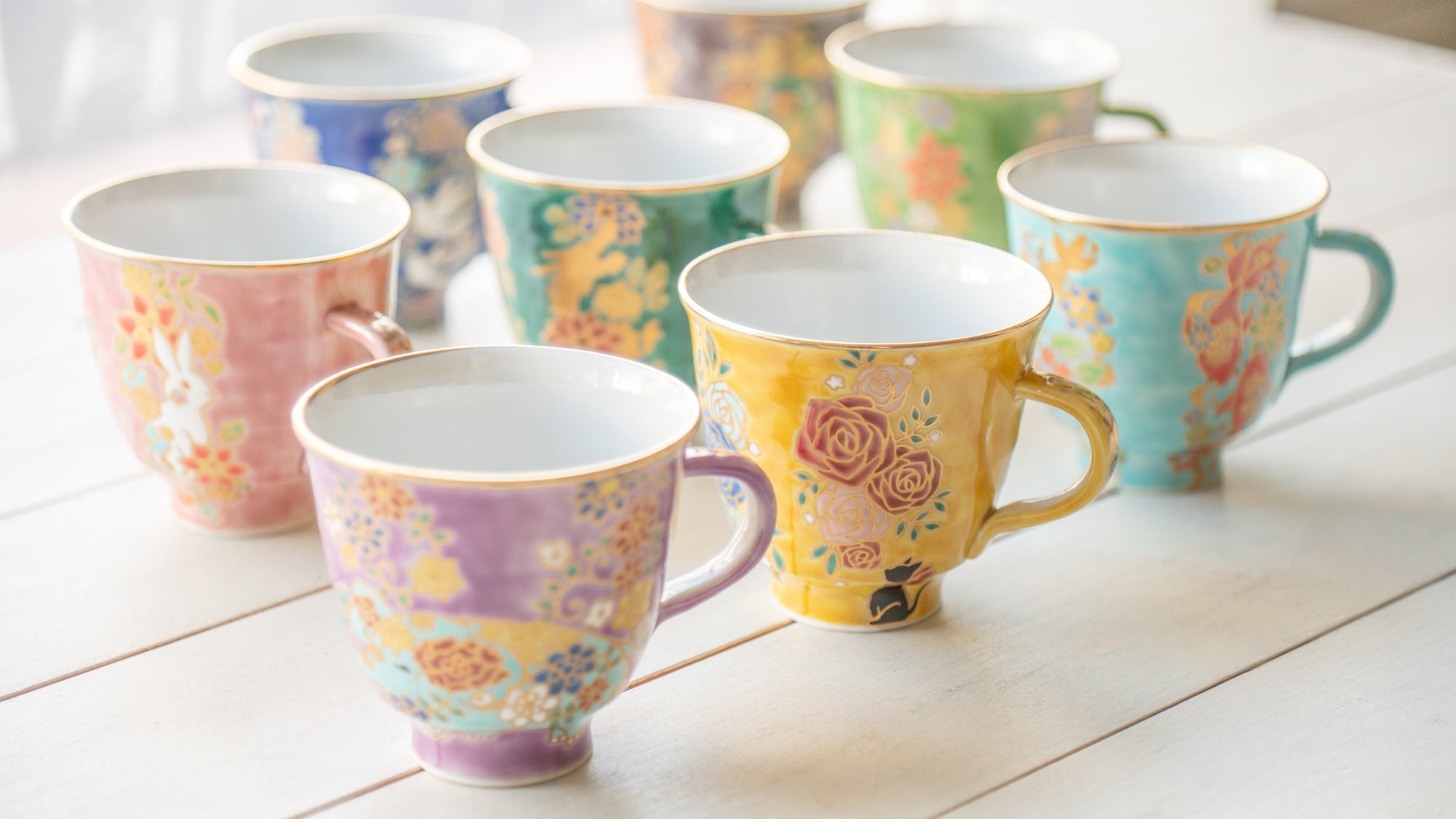
Crafts
Kutani ware is a pottery produced in the Kaga region of Ishikawa Prefecture, with a history spanning over 350 years. It is characterized by the heavy brilliance of the five colors of navy blue, red, purple, green, and yellow that are applied to the bold and daring lines. Its long history has evolved through the tireless efforts and enthusiasm of people who have sought innovation while maintaining tradition.
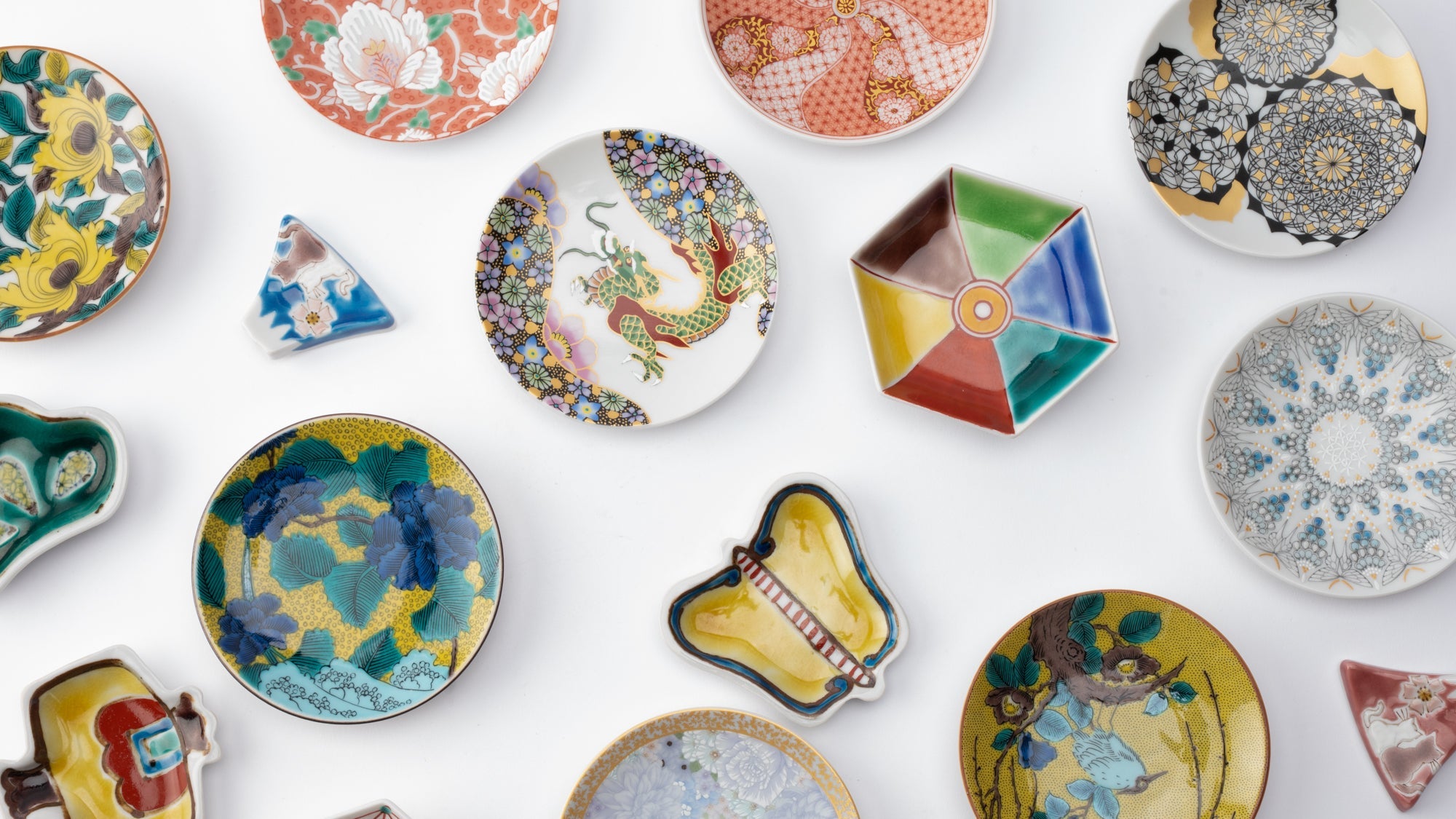
Choose options













Estimated Shipping Widget will be displayed here!
Decorative Plates
Enhance the sophistication of your living space with our exclusive collection of Japanese decorative plates. Meticulously crafted, each plate serves as a canvas for traditional Japanese motifs—from iconic Hokusai designs to intricate patterns inspired by nature.
Perfect as conversation starters, these timeless pieces are also highly popular as thoughtful and unique gifts. Elevate your décor and impress your guests with these exquisite works of art.
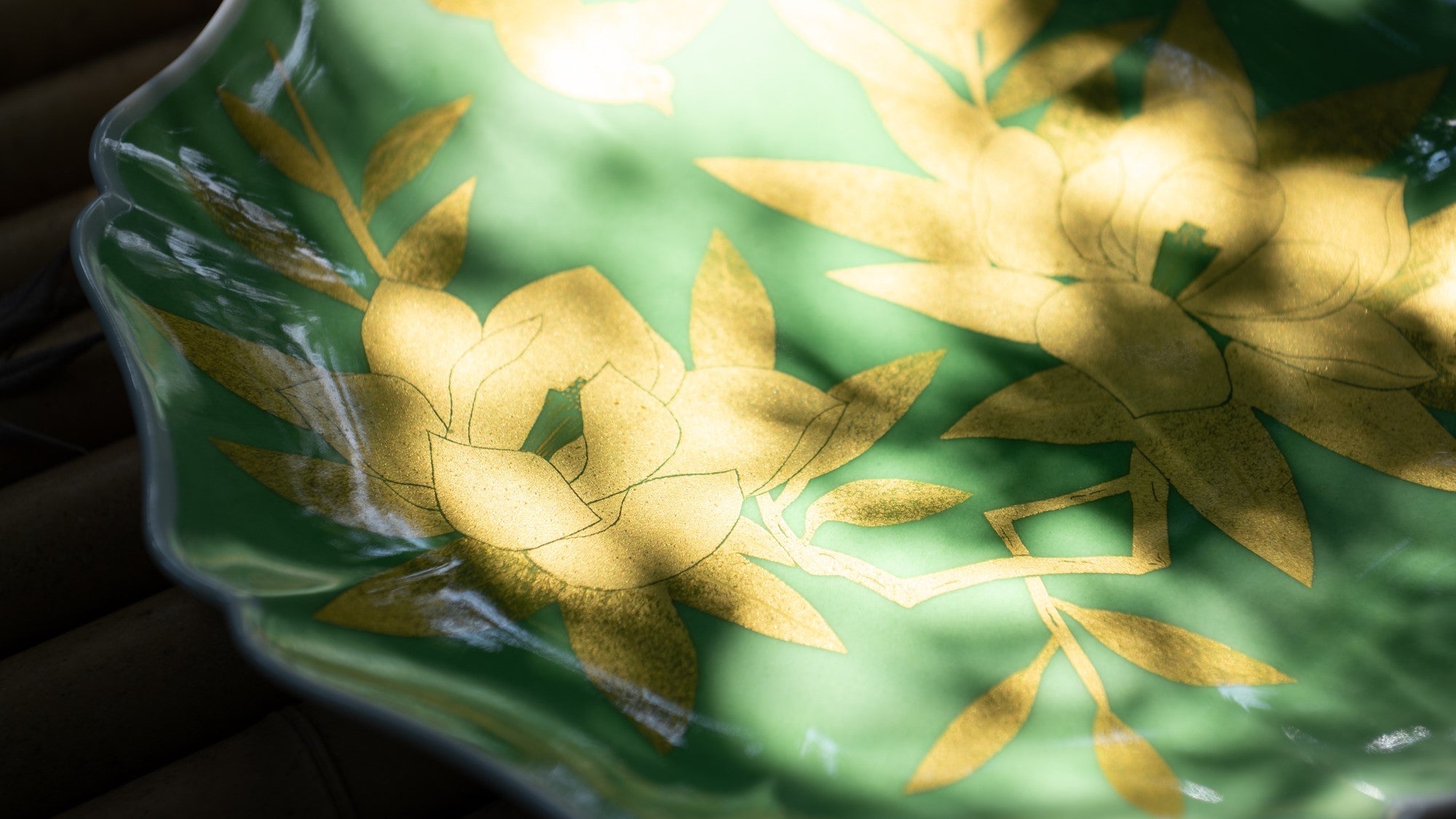
Mount Fuji
From our Japanese tableware and dinnerware collection, we have collected items with the motif of Mount Fuji, a symbol of Japan. We hope you will welcome these pieces, which are loved by people of all ages and regions, into your home.
